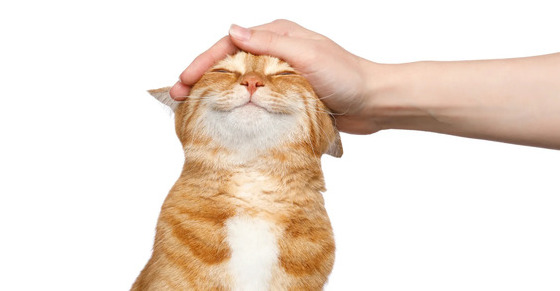Cats are mysterious, independent, and fascinating creatures that often leave their owners scratching their heads over their behavior. If you've ever wondered why your cat suddenly darts around the house, flicks its tail, or seems to "talk" to you with a series of meows, you're not alone. In this article, we’ll decode some of the most common cat behaviors, explain cat body language, and share some surprising facts about our feline friends. By understanding your cat better, you can strengthen your bond and appreciate these remarkable animals even more.

Cats have unique instincts and communication methods rooted in their evolution as hunters and solitary animals. Understanding the reasons behind their behavior can help you meet their needs and ensure a happier coexistence.
If your cat suddenly runs wildly around the house, especially at night, they're having what’s commonly referred to as the "zoomies." According to Dr. John Bradshaw, author of Cat Sense: How the New Feline Science Can Make You a Better Friend to Your Pet, zoomies are a natural outlet for pent-up energy. Cats are crepuscular, meaning they are most active at dawn and dusk, times when their ancestors would hunt in the wild.
Cats knead with their front paws, pushing them in and out against a soft surface like a blanket, your lap, or a pillow. This behavior is often a sign of contentment and a throwback to kittenhood when they kneaded their mother's belly to stimulate milk flow. Dr. Debra Horwitz explains in Feline Behavior Guidelines that kneading can also be a way for cats to mark their territory, as their paws release scent pheromones.
When your cat bumps their head against you, it's called "bunting." This behavior is a form of scent marking, where cats transfer pheromones from their scent glands to claim you as part of their territory. According to Dr. Mikel Delgado, a cat behaviorist at UC Davis, this is also a way cats show trust and affection.
Cats primarily communicate through their body language, and learning to interpret these signals can help you understand their mood and needs.
Upright Tail: A happy and confident cat.
Puffed-Up Tail: Indicates fear or aggression.
Slowly Swishing Tail: Your cat is focusing or feeling annoyed.
Tucked Tail: A sign of submission or fear.
Ears Forward: Your cat is alert and interested.
Ears Flat Against the Head: A sign of fear or aggression.
Ears Rotating Backward: Your cat may be irritated or overstimulated.
Cats communicate trust and affection with a "slow blink." If your cat gives you a long, slow blink, try returning it—it’s their way of saying, "I trust you." Conversely, a hard stare can be a sign of fear or aggression.
While purring is often associated with a content cat, it can also indicate stress or discomfort. Dr. Karen Overall, a veterinary behaviorist, suggests observing other body language cues to determine the true meaning of your cat’s purr.
Cats are full of surprises, and their behaviors and abilities are even more impressive than they seem at first glance.
A 2019 study by Dr. Atsuko Saito in Scientific Reports found that cats can recognize their names, even if they often choose to ignore them. This shows that cats are more attuned to human interactions than previously thought.
Adult cats don’t meow to communicate with other cats—this sound is reserved specifically for humans. According to Dr. Bradshaw, cats have learned to tailor their meows to elicit the desired response from their owners, making them excellent manipulators.
Thanks to their powerful hind leg muscles and keen balance, cats can jump extraordinary distances. This ability helps them navigate their environment and avoid predators in the wild.
Cats have a special organ called the Jacobson's organ, located on the roof of their mouth. When they curl back their lips in a behavior known as the "flehmen response," they are analyzing scents, almost like tasting the air.
Cats sleep an average of 12-16 hours a day to conserve energy for hunting, even if they don’t need to hunt in a domestic setting. This behavior is a remnant of their wild ancestors.
Now that you understand more about cat behavior and body language, you can use this knowledge to deepen your bond with your feline friend. Here are some tips:
Playtime: Engage your cat with interactive toys to mimic hunting behavior.
Respect Their Space: Let your cat approach you on their terms.
Provide Mental Stimulation: Puzzle feeders and climbing structures can keep your cat mentally and physically active.
Create a Comfortable Environment: Ensure your cat has a cozy place to rest, clean litter boxes, and access to fresh water.
Explaining cat behavior, understanding cat body language, and discovering amazing facts about cats not only enhances your relationship with your pet but also helps you appreciate their unique nature. From zoomies to purring, every action has a reason rooted in their instincts and evolution. By learning to interpret your cat's signals, you can ensure they feel safe, loved, and cared for.
References:
Bradshaw, J. (2013). Cat Sense: How the New Feline Science Can Make You a Better Friend to Your Pet. Basic Books.
Horwitz, D. (2009). Feline Behavior Guidelines. American Association of Feline Practitioners.
Saito, A., et al. (2019). "Domestic Cats Recognize Their Own Names." Scientific Reports.
Overall, K. (2017). Manual of Clinical Behavioral Medicine for Dogs and Cats. Elsevier.
Delgado, M. (2020). "Understanding Cat Behavior: A Scientific Approach." UC Davis Feline Behavior Lab.
animal tags: Felidae
We created this article in conjunction with AI technology, then made sure it was fact-checked and edited by a Animals Top editor.